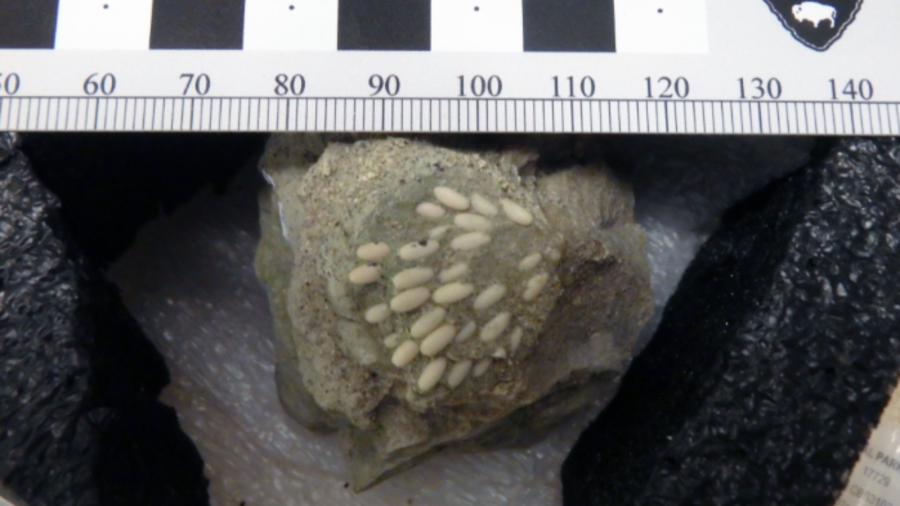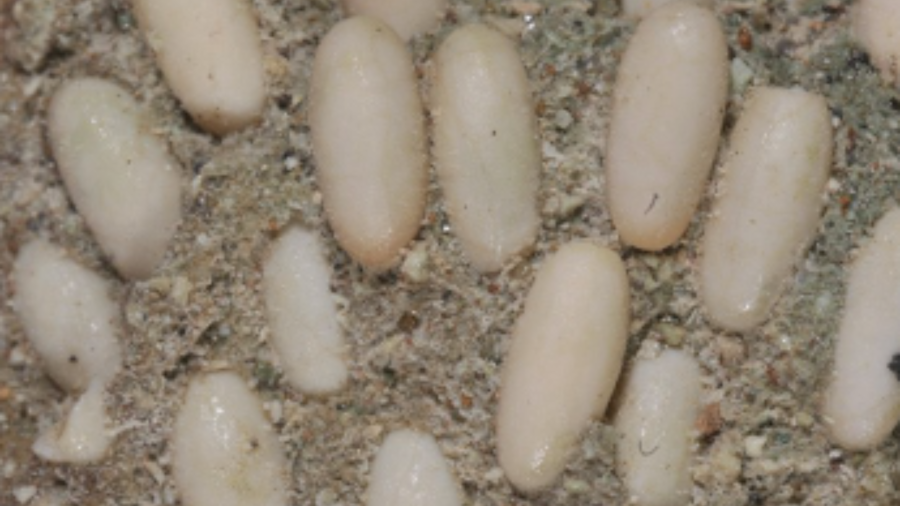29-million-year-old grasshopper egg fossil found in John Day Fossil Beds

PORTLAND, Ore. (KOIN) – The first-ever described fossilized grasshopper nest has been identified after scientists discovered the 29-million-year-old fossil in the John Day Fossil Beds in 2016, the National Park Service announced Friday.
Scientists from University of Oregon, University of California, Berkley, and the John Day Fossil Beds National Monument used micro-CT scans to investigate the internal structure of more than 50 fossilized insect eggs and the intact grasshopper egg pod from the Sheep Rock Unit of the fossil beds — publishing their findings in the Parks Stewardship Forum journal.
The eggs were previously found in 2016 and identified as ant pupae or ant eggs before scientists confirmed they were not made by ants as the shape of the eggs is consistent with modern grasshoppers that lay their eggs in underground nests, according to the National Park Service.
Scientists identified the first-ever described fossilized grasshopper egg pod in the John Day Fossil Beds, the National Park Service announced Jan. 15, 2024, after the fossil was first discovered in 2016. Officials said the eggs are 29 million years old (National Park Service.) Scientists identified the first-ever described fossilized grasshopper egg pod in the John Day Fossil Beds, the National Park Service announced Jan. 15, 2024, after the fossil was first discovered in 2016. Officials said the eggs are 29 million years old (National Park Service.)
“Never before has a fossil egg pod of grasshoppers been found and described on Earth, attesting to their rarity and the exceptional preservation of the John Day fossil beds,” the National Park Service said in a press release announcing the discovery.
PHOTOS: Winter weather leaves Portland covered in ice
The fossilized eggs, Curvellipsoentomoolithus laddi, were posthumously named after the first National Park Service superintendent of the John Day Fossil Beds National Monument, Benjamin Ladd. Ladd started the protection, resource management, and science programs at the park that study and protect the fossils.
For the latest news, weather, sports, and streaming video, head to KOIN.com.



